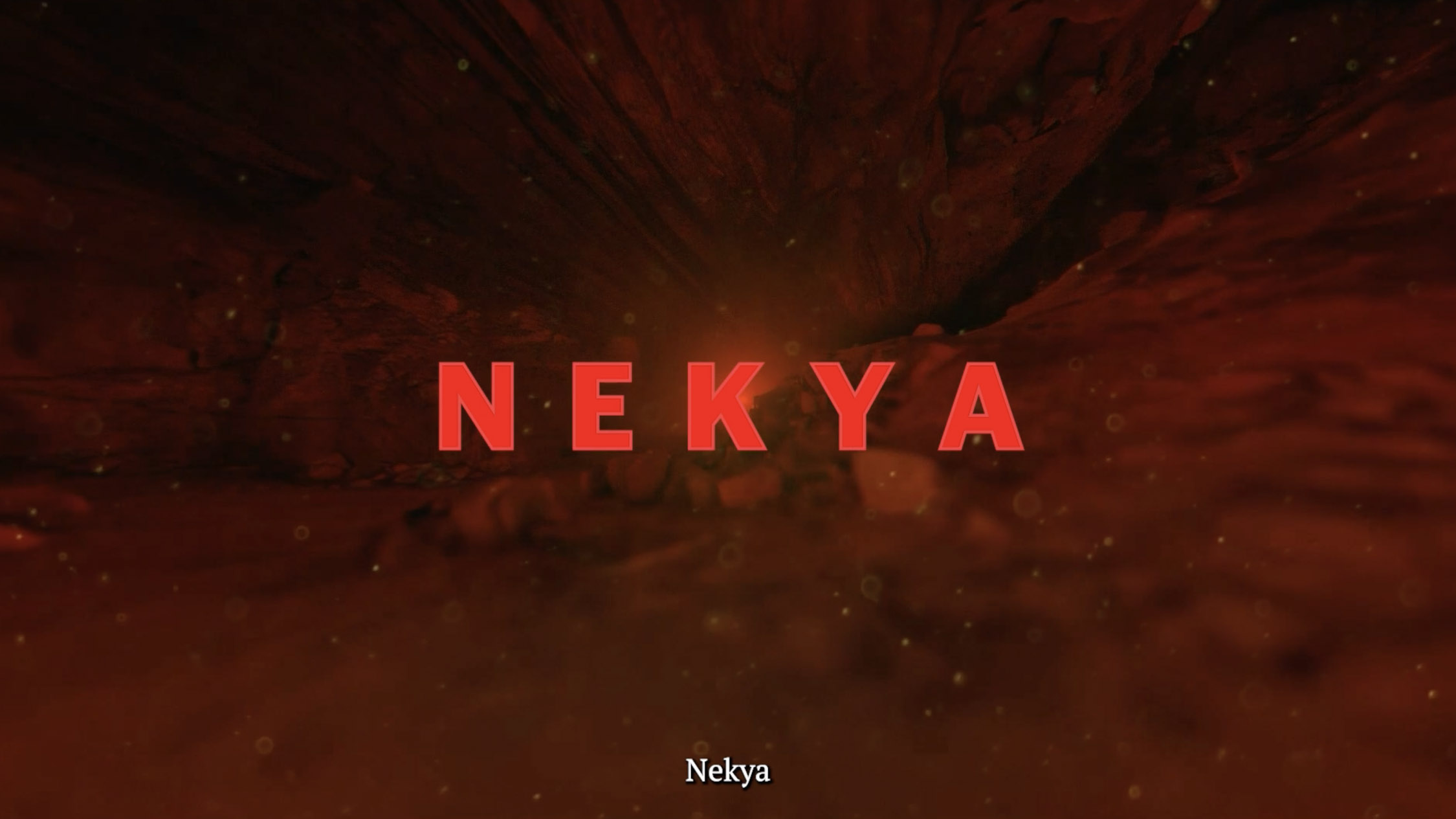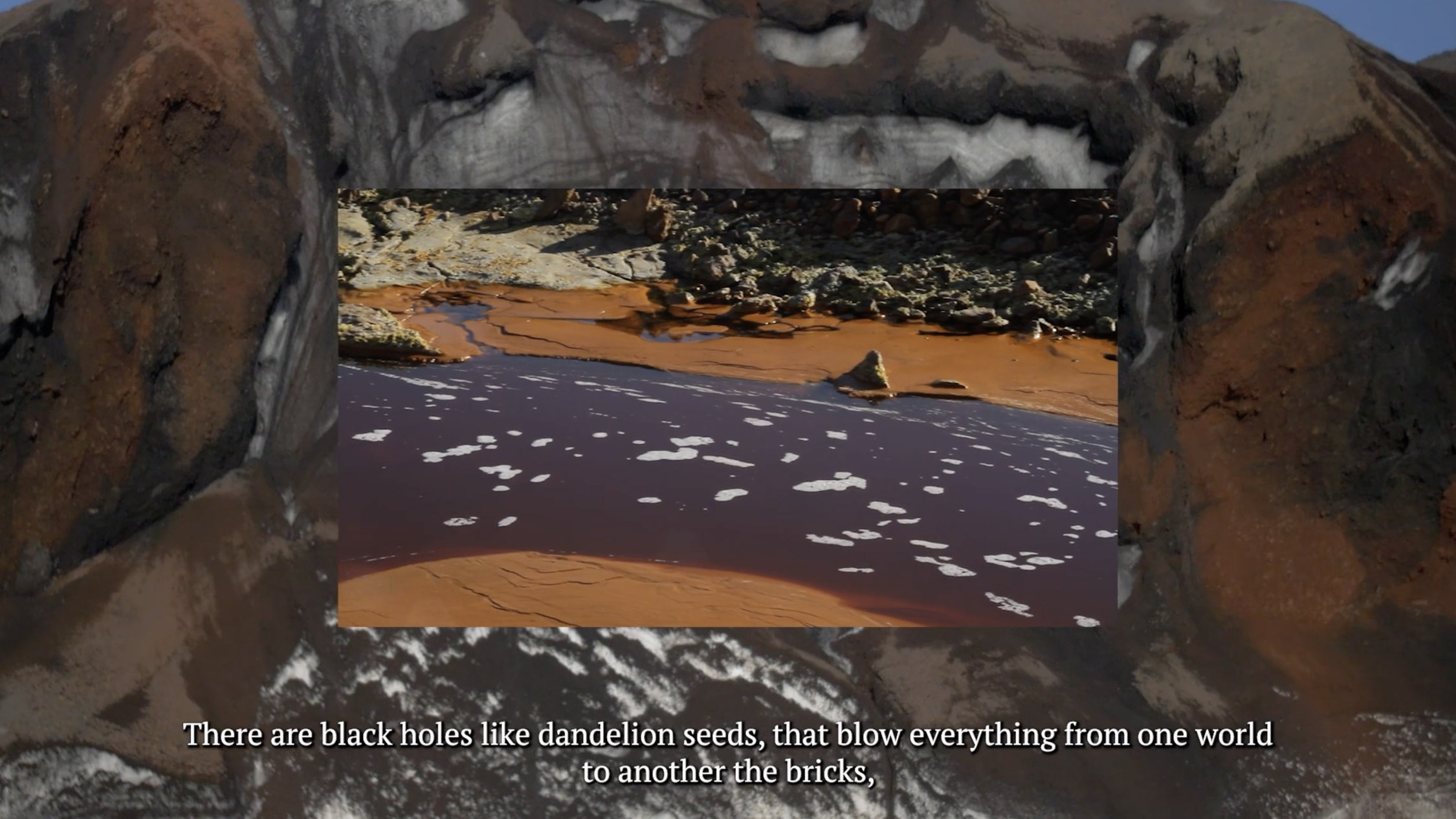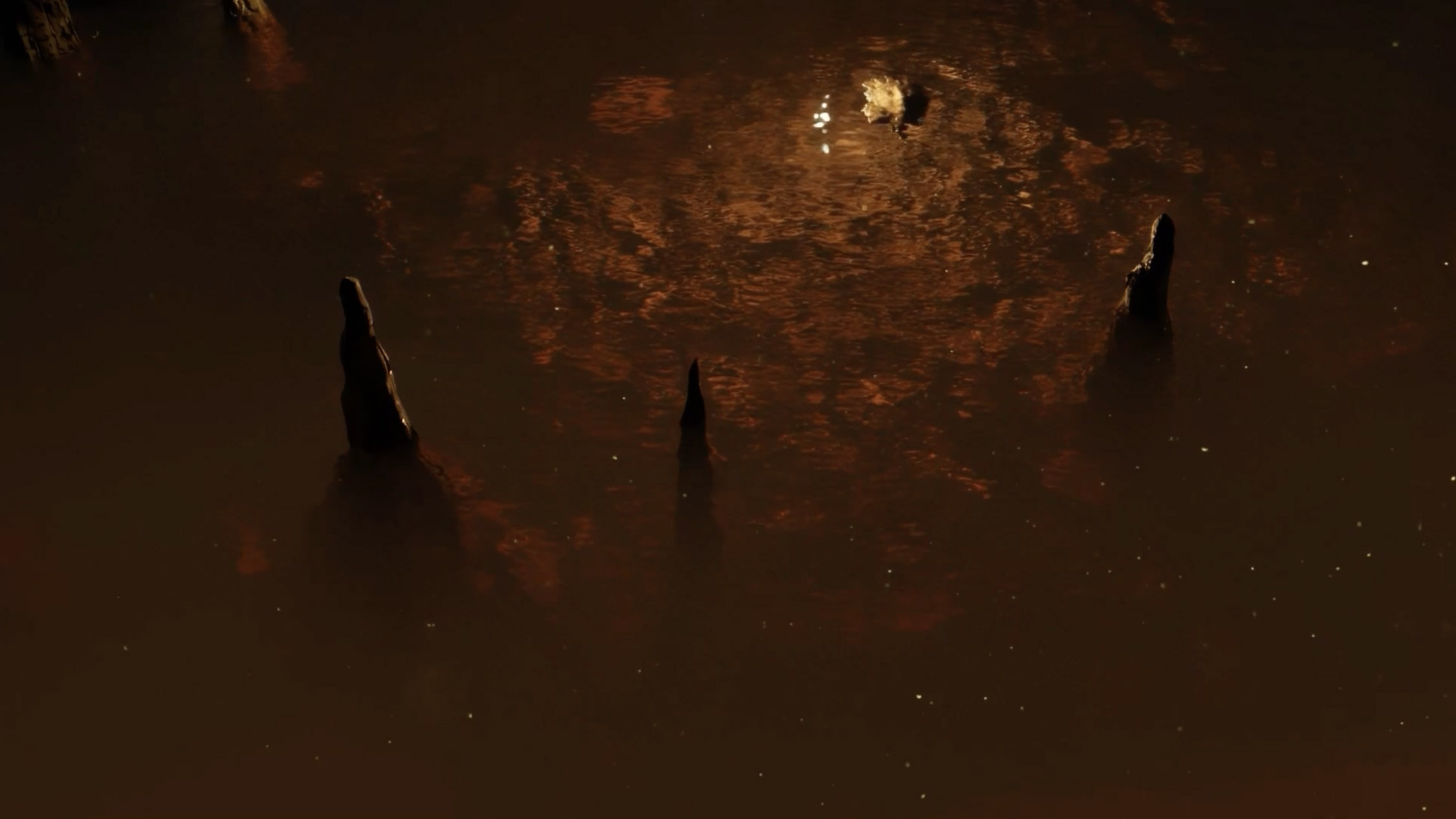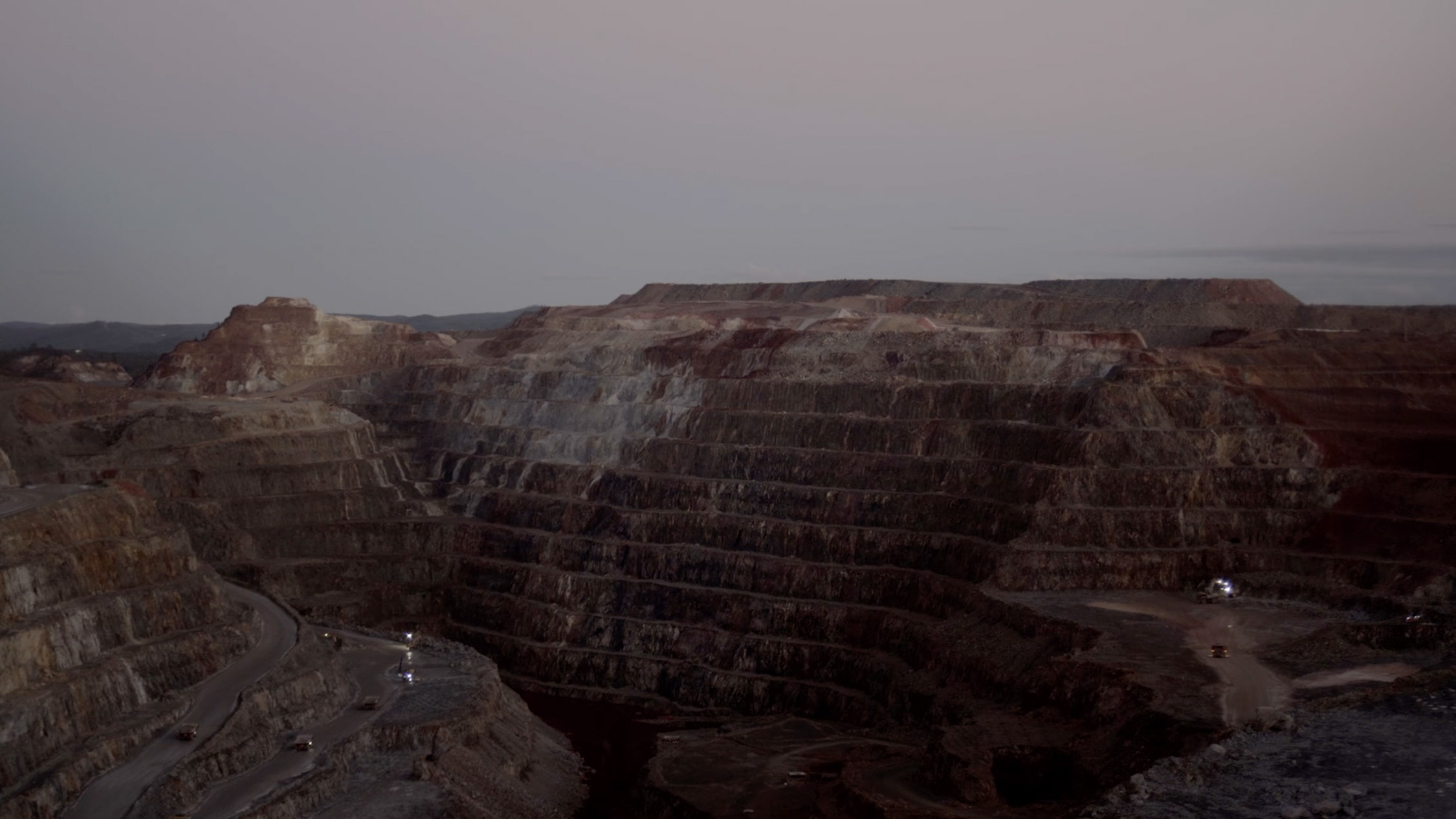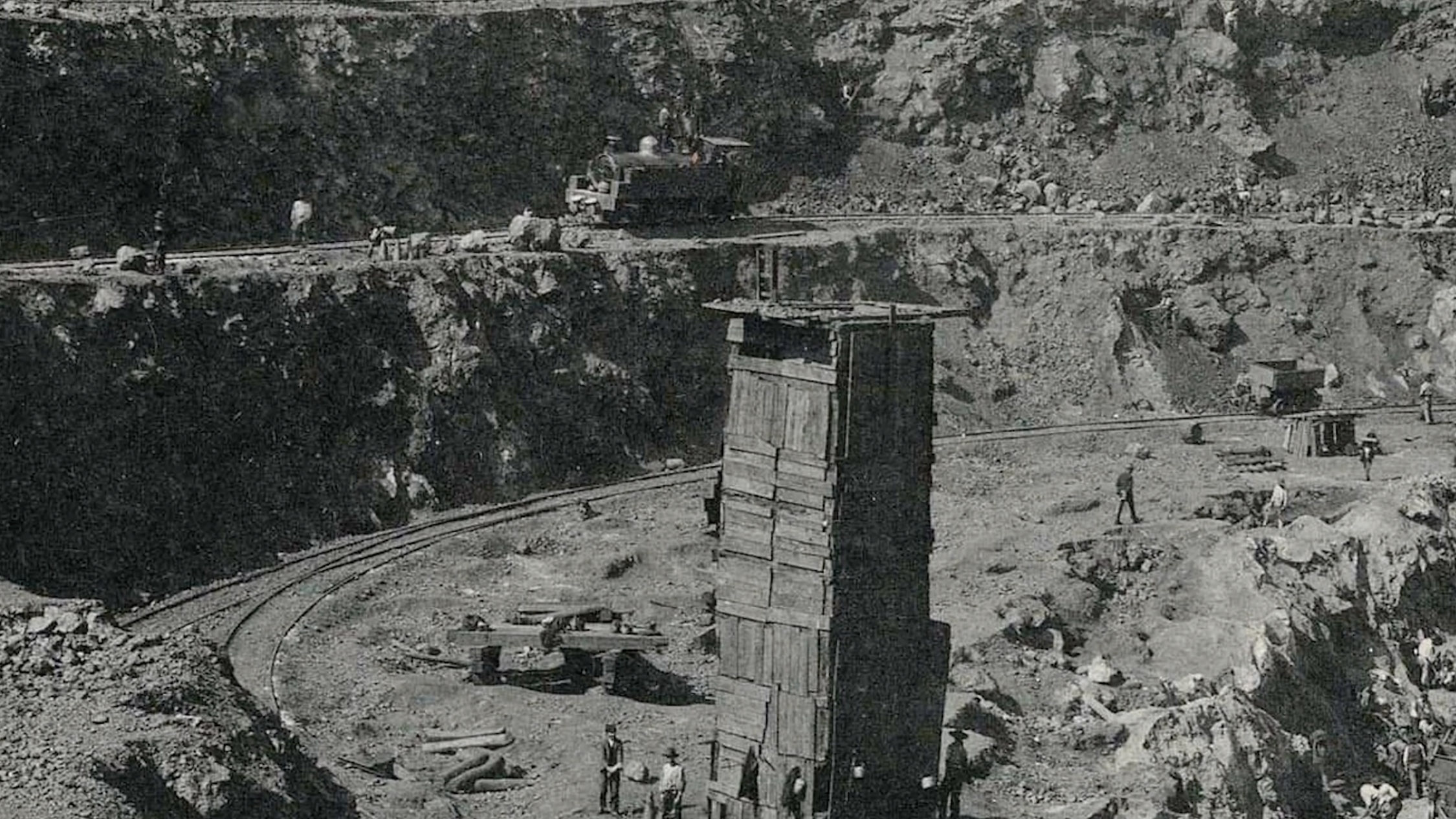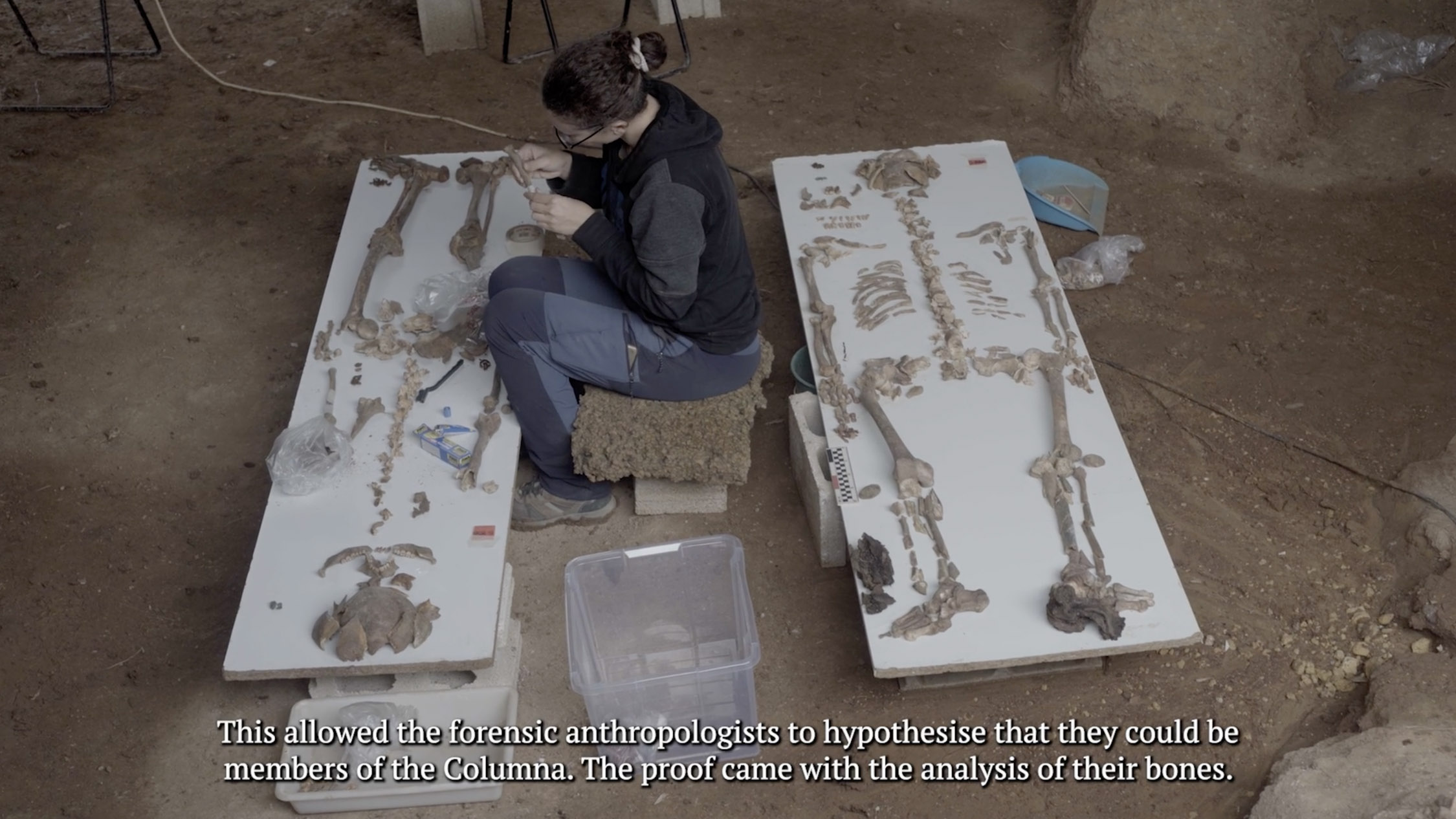What the Olive Branch Has Seen
Curated by Àngels Miralda
Green, how I want you green.
Green wind. Green branches.
The ship out on the sea
and the horse on the mountain.
–Federico García Lorca
This series of films departs from a conversation on landscape in the poetry of Federico Garcia Lorca and Mahmoud Darwish. It posits landscape as a place of connection as well as a reflection on memory, distance, and exile. The figure of the olive tree connects a wide Mediterranean region through millennia of parallel agricultural ritual and ecological coexistence. The olive branch is known as a symbol of peace while residing in a region that has been cut apart and divided.
Trees are a living archive of the land. Olive trees can live up to thousands of years, making them a stable and familiar element for generations of their neighbours. The olive branch is a symbol of peace whose stable grip has been wrested from the soil. They are also targets in the ongoing catastrophe in Palestine that is impossible not to speak of.
An eternal conversation blows through the olive branches of doubled landscapes.[1] Across the knobbed bark of grandmother’s hands, leaves like sharp fingers shading a ripening fruit. Every September, bitter and hard, little black diamonds melt into gold. With a lifespan of thousands of years – trees have drunk centuries of carefully watered soil. Planted and tended by ancestors whose names we no longer remember, but who still play with your hair in the autumn breeze. A symbol of peace – they say – and one who cannot move, cannot be displaced, cannot but stand still and be.
The village where my great-grandfather was born is in the hills that overlook Cartagena, where the sweetest oranges fall into the salted sea. Out of the yellow earth scorched by sun and the fine Saharan sand; almonds, carob, strawberry, grape, fig, and olive. Yellow summers, and green winters spark a power of recognition, presence, and distance.
More than 800,000 olive trees have been uprooted by Israeli forces following the massacres and forced expulsion of the Palestinian people since 1948.[2] It is said that Al-Badawi, an olive tree that lives near Bethlehem, is 4,000 years old.[3] These trees have become a symbol of the peace and resistance of the Palestinian people who risk continuous attacks from illegal settlers in order to save their harvests. Time does not heal but increases the intensity of destruction including the severity of the events in 2023.[4] The trees are an extension of the land and its people, they anchor communities to soil, making them physical and symbolic targets for annihilation. Farmers regularly find that their trees have been uprooted, burned, stolen, or vandalised.[5]
Environmental degradation is not a symptom, but policy.[6] The importation of foreign pine trees by the Israeli state caused acidification of the soil. In turn, desertification took hold in an already arid region. The walls built to stop human movement also restrict the natural migration paths of animals who carry pollen and seeds, now cut off from access to their feeding grounds.[7] We also form part of a symbiotic network of soil, seeds, and livestock in which artificial political boundaries play no part. Jumana Manna’s film Foragers follows the Palestinian elders who are patrolled, controlled, and stopped from clipping wild plants, a continuous practice of cohabitation of territory since Neolithic times that promotes the healthy growth of edible and medicinal plant life.[8]
Some of the state-sanctioned uprooting has been done for the purpose of building new roads to connect illegal settlements.[9] These roads serve to cut access further between villages as well as farmers from their orchards. New impositions of farming methods include monoculture techniques rather than a mixture of orchards, foraging, and mixed crops that work in tandem with the soil for renewal of nutrients and disease-resistance.[10] Shells and bombs that do not hit infrastructure still lead to long-term consequences for life in affected areas. It is unknown what contaminants and chemicals are inside of Israeli and American weapons, some compounds such as white phosphorus produce multi-front forest fires and seep into groundwater.[11]
A motor starts and the bus rumbles down the street, final destination Hebron Valley – a working-class district overlooking the city of Barcelona. Further than nomenclature, parallels in our landscapes have always been found. In 1963 Pier Paolo Pasolini visited Palestine with the hope of finding filming locations for Il Vangelo Secondo Matteo (1964). The film was ultimately filmed in Southern Italy – a parallel landscape with geological and aesthetic similitude. Pasolini lamented that the Israeli settlements resembled the new suburbs of Rome, while the occupation marked the Palestinians with misery.[12] No matter the angle of the camera, it was unable to avoid scenes that testified to the militarised borders and omnipresence of colonial capitalism.[13]
One of the recurring references in the work of Palestinian poet Mahmoud Darwish is Federico García Lorca.[14] Both poets wrote of the deep bonds between people and their landscapes while speaking of injustice and political repression. Lorca actively fought against the historical erasure of Arabs in the Iberian peninsula through references to the prose of Andalusi authors.[15] Darwish, a refugee since childhood, yearned for Al-Birwa – his place of birth that existed only in his memory.
In opposition to Pasolini’s “heretical orientalism”[16] it is possible to find Palestine under the shade of an olive tree as a symbol calling out for anti-colonial internationalism. Rather than searching for landscapes untouched by the scars of omnipresent occupation, it is possible to feel the trees shake due to distant vibrations and the ghosts of checkpoints under the sun’s rays. This landscape belongs to all seeds that drift in the wind and thrive in this climate, a shared recollection of familiarity summoned by closed eyes imagining something called home. Images, archives, and histories emerge from the interconnected region between Central Asia, Southern Europe, and North Africa. History flows outside of pacted borders and artificial segregations, whose hands are busy with the same action of picking, gathering, pickling, pressing.
If the olive trees knew the hands that planted them
Their oil would become tears.
-Mahmoud Darwish
Notes:
[1] Thank you to my neighbour Aida Qasim for the conversation about Darwish and Lorca.
[2] Raja Shehadeh, “The Uprooting of Life in Gaza and the West Bank,” 26 October 2023. The New Yorker (https://www.newyorker.com/news/daily-comment/the-uprooting-of-life-in-gaza-and-the-west-bank#:~:text=Since%201967%2C%20more%20than%20eight,Many%20were%20centuries%20old.)
[3] Noor Ibrahim, “Olive Groves in the West Bank Have Become a Battleground. That’s Why Volunteers Come From Around the World to Help at Harvest Time” Time, 1 November 2019. (https://time.com/5714146/olive-harvest-west-bank/)
[4] Bárbara Ayuso, “Los últimos palestinos que resisten en el olivar: “Los colonos tratan de quitarnos la comida sobre la mesa”” 17 November 2023. (https://elpais.com/internacional/2023-11-17/los-ultimos-palestinos-que-resisten-en-el-olivar-los-colonos-tratan-de-quitarnos-la-comida-sobre-la-mesa.html)
[5] Amira Hass, “5,000 Trees Vandalized in Palestinian West Bank Villages in Less Than Five Months” Haaretz, 10 May 2023. (https://www.haaretz.com/israel-news/2023-05-10/ty-article/.premium/5-000-trees-vandalized-in-palestinian-west-bank-villages-in-less-than-five-months/00000188-00b8-de69-a3ac-befb50690000)
[6] Mazin B. Qumsiyeh and Mohammed A. Abusarhan, “An Environmental Nakba: The Palestinian Environment Under Israeli Colonization”, Science Under Occupation, Volume 23. Spring 2020. (https://magazine.scienceforthepeople.org/vol23-1/an-environmental-nakba-the-palestinian-environment-under-israeli-colonization/)
[7] Vanessa O’Brien, “Animal migration,” 11 February 2012. (https://www.dw.com/en/israeli-army-opens-west-bank-barrier-for-animals/a-16351700)
[8] Jumana Manna, “Where Nature Ends and Settlement Begins” E-Flux Journal, November 2020. (https://www.e-flux.com/journal/113/360006/where-nature-ends-and-settlements-begin/)
[9] The Israeli Information Centre for Human Rights in the Occupied Territories, “Some 1,000 Olive Trees Uprooted to Build Bypass Road on Azzun Village Land” 5 February 2017. (https://www.btselem.org/20170205_nabi_elyas_bypass_road_land_confiscation#full)
[10] Carolina S. Pedrazzi, “In the West Bank, Israeli Settlers are Burning Palestinians’ Olive Trees” Jacobin. 11 October 2023. (https://jacobin.com/2023/11/west-bank-israeli-settlers-palestinian-olive-trees-violence-occupation)
[11] Middle East Monitor, “Report on Long-term Effects of Israeli White Phosphorous,” 20 February 2014. (https://www.middleeastmonitor.com/20140220-report-on-long-term-effects-of-israeli-white-phosphorus/)
[12] SouthSouth, “Pasolini Filming Palestine,” 15 April 2010. (https://southissouth.wordpress.com/2010/04/15/pasolini-filming-palestine/)
[13] “The shots of Jerusalem surrounded by barbed wire are particularly compelling. As Pasolini’s voiceover expresses awe at the natural beauty of these surroundings, the camerawork displays the indignities of everyday life for Palestinian inhabitants. As seen above, the camera zooms in and out of a shot of birds perched on top of barbed wire, in and out and in and out, a syntactical repetition of a sublime and sordid reality.” ibid.
[14] Mahmoud Darwish, Unfortunately, it was Paradise, University of California Press. 2003. (pg. Xvi Introduction) The first citation of the book are Lorca ‘s phrases “pero yo ya no soy yo / ni mi casa es ya mi casa).
[15] “In the Shadow of Lorca” (https://www.latinolife.co.uk/articles/shadow-lorca) Including 12th century poet Ibn Khafaja’s poetry about the fall of Valencia.
[16] Luca Caminati, “Orientalismo eretico: Pier Paolo Pasolini e il cinema del Terzo Mondo” Bruno Mondadori. 2007.
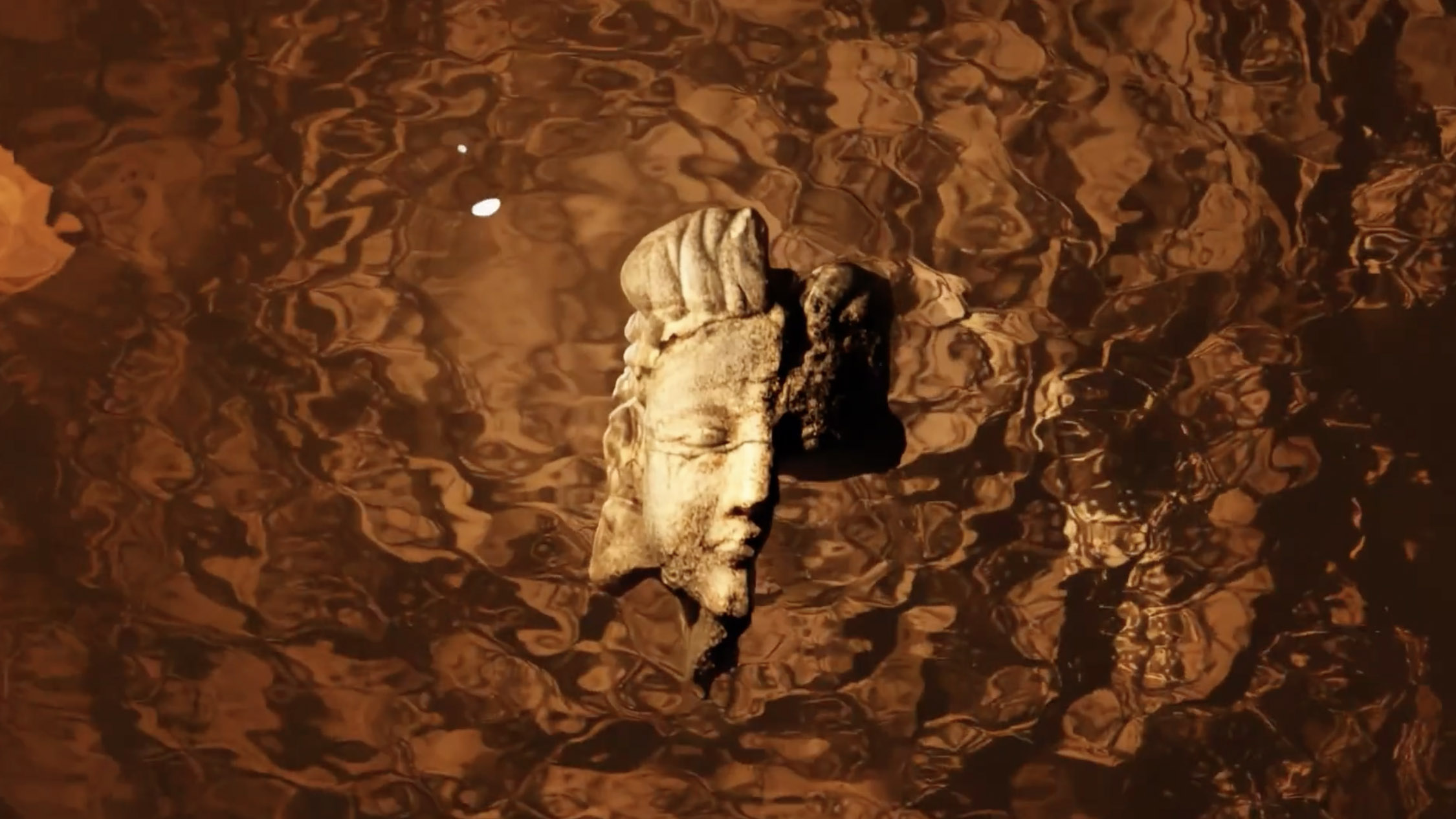
November 6 – 27, 2024
Regina de Miguel
Nekya, a Film River (2023)
HD video and 3D animation, 173 min.
Nekya, a Film River (2023) is a full feature film that documents the geological traces of colonialism in Andalucia’s mineral record. The mines of Rio Tinto are some of the longest still-operating mines in the world with evidence of activity since the ancient Tartessians who would see the last moment of self-rule in the region. The film lays bare the role of extraction in the colonial process, its experiments and propagation from the red waters that flow into the Guadalquivir and into the open Atlantic – this is the source of the conquest of the Caribbean as well as the contemporary deterritorialized mining company, British-Australian conglomerate Rio Tinto Group. Language carries the name of a geological origin – this harsh terrain, one of earth’s analogues to Mars – a vital link in a planetary chain of violence, conquest, and pillage.
De Miguel’s film is a bricolage of poetic verses, documentary interviews, and historical investigation about what lies above and below the ochre soils northeast of Seville. It traces how this land became the location of Spain’s first ecological strike in the 19th century which ended in military guards opening fire against their own people to safeguard the interests of British capitalists, and how this model was exported from there to the territories of indigenous people from Canada to Australia. Today, the EU is supporting a new endeavour by Rio Tinto Group in to mine lithium for its planned green transition in Serbia, local activists groups have organised protests against the contamination of groundwater and adverse health effects for the local population. At a point of extreme ecological fragility, Río Tinto narrates our intertwined paths, chemical and biological, that relate exploitation of land and people to the nefarious politics of the few.
Regina de Miguel is known for her filmmaking and interdisciplinary artistic practice that combine research and the development of processes that result in the production of knowledge, films, and hybrid projects. One of the main discursive threads in de Miguel’s work is the critical analysis of the supposed objectivity of scientific devices of representation and the conditions of production of scientific knowledge. From a methodical approach, she establishes complex networks of connections that are nourished by the philosophy of science, ecofeminism, and speculative fiction and terror, which give rise to theoretical, existential, and poetic displacements where fragility operates as a form of resistance.
Solo exhibitions of de Miguel’s work include Arbustos de nervios como bosques de coral at The Green Parrot, Barcelona (2021); I´m part of this fractured frontier at C3A, Córdoba (2018); Aura Nera at Centro de Arte Santa Monica (2016), Barcelona; Ansible at Maisterravalbuena (2015), Madrid; and All knowledge is enveloped in darkness at Kunsthalle Sao Paulo (2014). Her filmography has been shown in numerous museums and institutions internationally and she recently contributed to the volume “140 Artists’ Ideas for Planet Earth” (2021), edited by Hans Ulrich Obrist and Kostas Stasinopoulos. Her work is held in several public and private collections, including the Thyssen-Bornemisza Art Contemporary and the Museo Nacional Centro de Arte Reina Sofía.
Regina de Miguel was born in Málaga, Spain. She lives and works in Berlin.
Àngels Miralda (1990) is an independent writer and curator. Her recent exhibitions have taken place at Something Else III (Cairo Biennale); Garage Art Space (Nicosia); Radius CCA (Delft), P////AKT (Amsterdam), Tallinn Art Hall (Estonia), MGLC – International Centre for Graphic Arts (Ljubljana), De Appel (Amsterdam), Galerija Miroslav Kraljevic (Municipal Gallery of Zagreb), the Museum of Contemporary Art of Chile (Santiago), Museu de Angra do Heroísmo (Terceira – Azores), and the Latvian Centre for Contemporary Art (Riga). Miralda wrote for Artforum from 2019-2023 and regularly publishes with Terremoto (Mexico City), A*Desk (Barcelona), Arts of the Working Class (Berlin), and is editor-in-chief of Collecteurs (New York).
